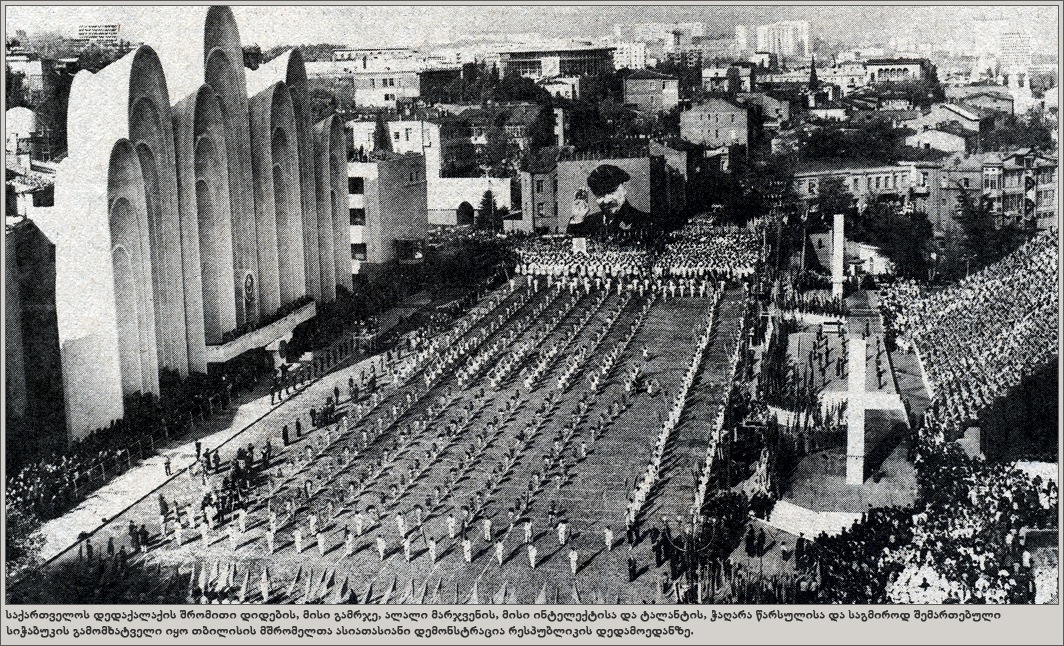Tbilisi’s Rose Revolution Square: a Political Showcase
By TINATIN GURGENIDZE and SEBASTIAN WEBER
Published in FA – Failed Architecture
Georgia’s changing political orientation has been continuously reflected in the dynamics of its capital’s former Republic Square: from military parades, to soviet relics and a vertical refugee camp, to sanitised commercial functions.
In the centre of Tbilisi lies the Rose Revolution Square, named after Georgia’s Rose Revolution of 2003. The place has changed a lot during the past decades, but still retained its character as an important part of the city. On the sunny 26th of May in 1995, the Georgian air force planes created a spectacle for the crowd that had gathered for Independence Day. Still called Republic Square back then, the square itself was also the setting for a military parade in celebration of the Georgia’s independence, which it gained shortly before the collapse of the Soviet Union in 1991. Although the air still contained the strange scent of war on that day in 1995 after a severe civil war, the young independent country was rejoicing. Yet, right in front of the audience stood the run-down Hotel Iveria, which was now home to over 800 Abkhazian refugees as a silent reminder of the recent conflicts. In fact, that very place had been a battlefield only a few years earlier.

Republic Square during a Soviet parade in the mid 1980s.
Almost two decades later, the square is mostly home to noisy traffic and vast empty spaces. The hotel has been emptied of the refugee squat, had a modern renovation and now belongs to the Radisson group. While the square is geographically exactly the same, a lot has changed. The place is not only one of Tbilisi’s few public squares, it is also arguably the place where the political and social transformation are most deeply reflected in urban space and architecture. Here, the country’s and the city’s recent past and present are visibly mixing, creating an absurd, mostly unused transitory space in the heart of town.
The story goes back to 1960´s, when Soviet Georgia was one of the top tourist destinations of the USSR. In 1967, the construction of the tallest building in Tbilisi was finished: Hotel Iveria, a 22 storey high structure designed by the Georgian architect Otar Kalandarishvili in the very geographical centre of Tbilisi and well visible from every point of the city. This prestigious Hotel was clearly not accessible to everyone. In order to book a room one had to make a reservation several months in advance through the official travel agency of the Soviet Union “Intourist”. Only the lucky ones would be able to stay in one of the rooms with a great view overlooking the entire town. Along with the hotel Mr. Kalandarishvili also designed the square in front of the hotel, which was finished much later, in 1983. As described by the architect himself at the time: “In the centre of the city, one of Tbilisi’s most important squares will be established by levelling an existing dip. The so created space underneath the square will contain more than 20 thousand square meters of useful space on three levels that will be used to create a social-cultural centre”.